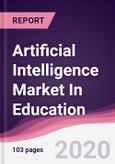What is Artificial Intelligence in Education?
Artificial Intelligence is a backend algorithms that programs machine to emulate and extend human behavior and actions. AI in education is about acquiring deeper understanding of what should be taught, how it should be taught and what impediments are preventing it from being acquired? With the help of AI every child it taught at their pace and corrected for their weakness. AI is helping tutor to get extra for their learning also.
What are the applications of Artificial Intelligence in Education?
Artificial Intelligence in Education is supporting intelligent tutoring system, is providing feedback and instruction to students without human interference. With the access to AI students can get filtered and updated content that is independent of barriers like language, religion etc.
AI playing major in grading during examination which saves lots of teacher’s time. It is also contributing in managing administration work. It is also contributing in tailoring the course content. AI can present information and provide practice time again and again without being sentimental and judgmental. AI has capability to give attention to each and every student in classroom and personalized the content.
Market Research and Market Trends of Artificial Intelligence in Education:
Geekie a Brazil based startup has created a personalized education app called Geekie Lab. It delivers entire syllabus to the student and they can access it anytime anywhere. This software just doesn’t deliver content, it also assess how they are performing in quiz and test, and pass their records to their teachers.
China’s largest AI provider in educational sector, New Oriental created an app called Realskill. It helps students to learn English as English is not taught in every school. To get PhD or any skill base job English is very important.
One of the market leader Cognii offers AI based virtual tutors and grading tool for short essay. It is more successful in higher education.
Who are the Major Players in Artificial Intelligence in Education Market?
The companies referred in the market research report are IBM, Microsoft, Bridge-U, Dreambox learning and10 other companies.
What is our report scope?
The report incorporates in-depth assessment of the competitive landscape, product market sizing, product benchmarking, market trends, product developments, financial analysis, strategic analysis and so on to gauge the impact forces and potential opportunities of the market. Apart from this the report also includes a study of major developments in the market such as product launches, agreements, acquisitions, collaborations, mergers and so on to comprehend the prevailing market dynamics at present and its impact during the forecast period 2018-2023.
Key Takeaways from this Report
- Evaluate market potential through analyzing growth rates (CAGR %), Volume (Units) and Value ($M) data given at country level – for product types, end use applications and by different industry verticals.
- Understand the different dynamics influencing the market – key driving factors, challenges and hidden opportunities.
- Get in-depth insights on your competitor performance – market shares, strategies, financial benchmarking, product benchmarking, SWOT and more.
- Analyze the sales and distribution channels across key geographies to improve top-line revenues.
- Understand the industry supply chain with a deep-dive on the value augmentation at each step, in order to optimize value and bring efficiencies in your processes.
- Get a quick outlook on the market entropy – M&A’s, deals, partnerships, product launches of all key players for the past 4 years.
- Evaluate the supply-demand gaps, import-export statistics and regulatory landscape for more than top 20 countries globally for the market.
Table of Contents
Methodology

LOADING...








